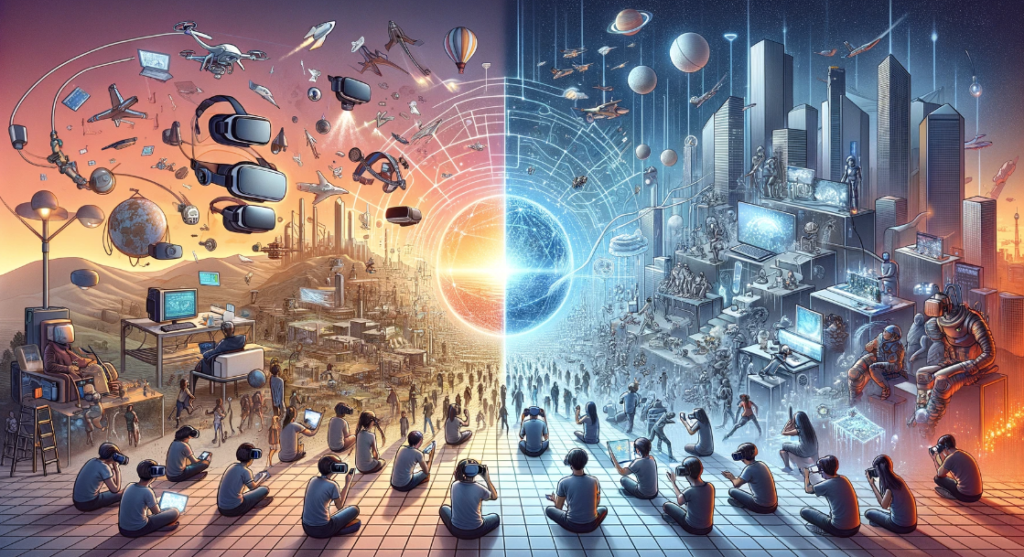Lesson 30. The Rise of Virtual Reality (仮想現実の台頭)

▮ Explanatory Text:
Virtual Reality (VR) technology immerses users in a computer-generated environment that simulates reality, offering experiences that are otherwise impossible or impractical. The rise of VR has transformed entertainment, education, healthcare, and even social interaction, providing innovative ways to play, learn, train, and heal. With VR, users can explore historical sites, undergo medical simulations, experience extreme sports, or interact in virtual social spaces. However, as VR technology becomes more pervasive, it raises questions about digital addiction, privacy, and the impact on physical and mental health. This topic explores the development of VR, its applications across various sectors, and the potential benefits and challenges it presents.
▮ Common Phrases:
1. VR technology allows users to…
2. Immersive experiences in VR can…
3. The application of VR in education enhances…
4. Challenges associated with VR include…
5. As VR becomes more accessible, it is important to…
▮ Example Sentences:
1. VR technology allows users to experience environments and scenarios that are difficult or dangerous to access in real life.
2. Immersive experiences in VR can significantly improve learning outcomes by providing interactive and engaging content.
3. The application of VR in education enhances students’ understanding of complex subjects through visualization.
4. Challenges associated with VR include concerns over user privacy and the potential for increased screen time to impact physical health.
5. As VR becomes more accessible, it is important to consider ethical implications and ensure that the technology benefits society as a whole.
▮ Questions:
1. How has VR technology evolved over the years, and what are its current capabilities?
This question encourages learners to explore the history and development of VR technology, highlighting key advancements and current features.
2. What are the most promising applications of VR in sectors such as healthcare, education, and entertainment?
Participants discuss various innovative uses of VR across different fields, considering the impact on these sectors.
3. What challenges do developers and users of VR technology face, particularly in terms of accessibility and user experience?
This prompts a discussion on the obstacles to widespread VR adoption, including hardware requirements, cost, and user interface design.
4. & 5. How can VR be used to foster social connections and overcome barriers imposed by distance or disability?
Learners examine the potential of VR to enhance social interaction and provide inclusive experiences for individuals with disabilities.
Discuss the ethical considerations and potential societal impacts of widespread VR use, including issues related to privacy and mental health.
This question invites speculation on the ethical and social implications of VR, encouraging a critical evaluation of the technology’s broader effects.
▮ Discussion Instructions:
Choose a specific application of VR technology that interests you or that you believe has significant potential. Discuss the benefits it offers, the challenges it faces in implementation, and the impact it could have on users and society. Reflect on how VR could shape the future of human interaction, learning, and entertainment.







